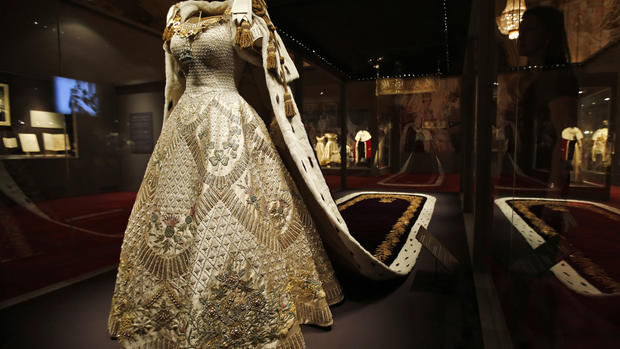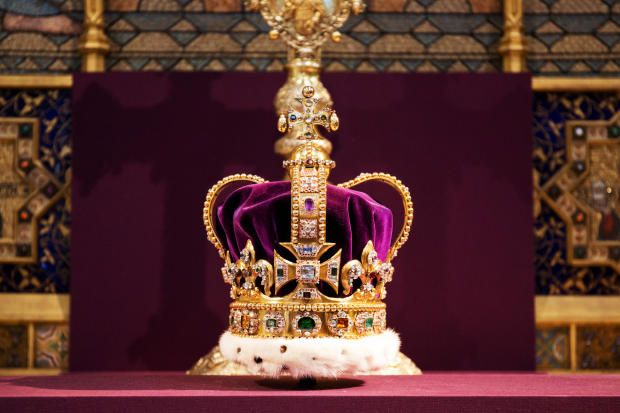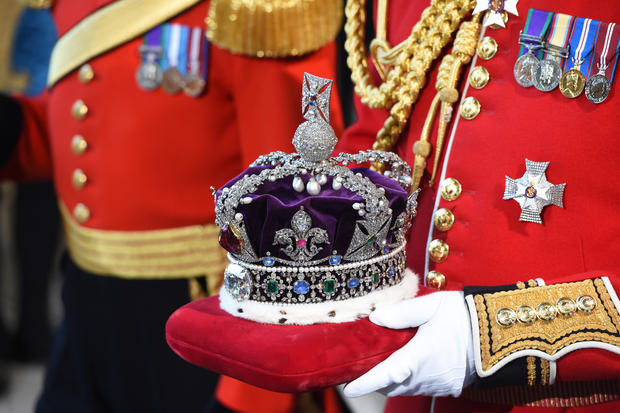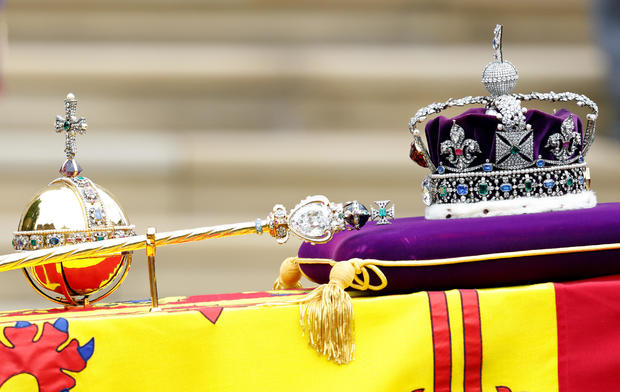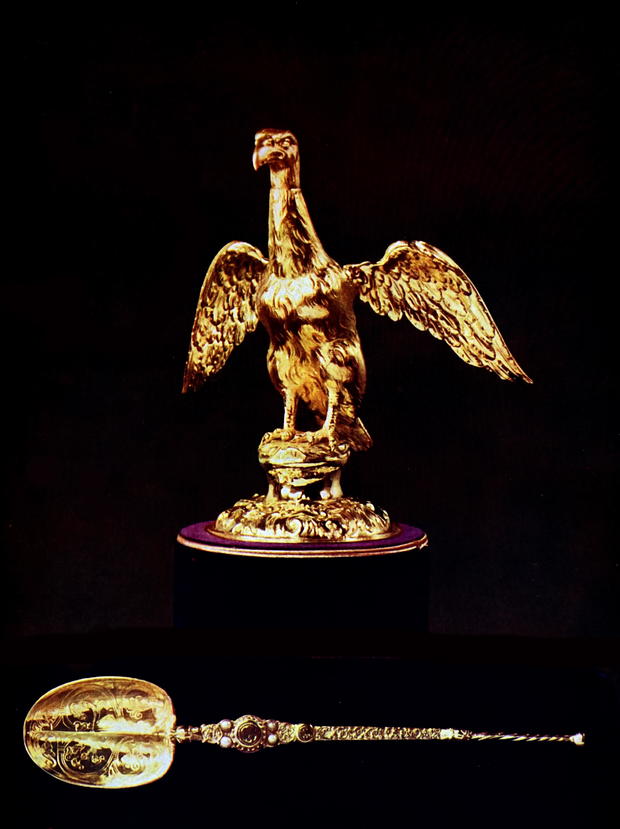[ad_1]
London — The coronation of King Charles III will be steeped in centuries of tradition. At the center of the ancient ceremony is a set of sacred artifacts known collectively as the coronation regalia. Some of the items date back almost 1,000 years.
Here is your guide to some of the most important items among the Crown Jewels that will feature in the coronation ceremony.
St. Edward’s Crown
A centerpiece of this coronation, as it has been for quite a few previous ones, will be St. Edward’s Crown. The headpiece is used only at the very climax of the ceremony, when it will be lowered onto King Charles III’s head at the “moment of coronation,” according to the Royal Collection that looks after Britain’s Crown Jewels.
Made from solid gold and adorned with 444 semi-precious stones, the crown weighs almost five pounds. The late Queen Elizabeth II once said in an interview that the weight of the crown would break your neck if you bent down while wearing it.
WPA Pool/Getty
The original, believed to have been made in the 11th century for King Edward the Confessor, was melted down almost 400 years ago. The current version, which is not an exact replica, dates back to 1661, when it was created for the coronation of Charles II.
Imperial State Crown
The second crown that will feature in the coronation is considered a “working crown.” The Imperial State Crown is typically worn on formal state occasions, including the annual State Opening of Parliament.
Eddie Mulholland/WPA Pool/Getty
On coronation day, King Charles III will wear it for the final procession from Westminster Abbey back to Buckingham Palace on the Gold State Coach, and then when he appears on the palace balcony to wave to supporters with other members of his family shortly after.
It’s much lighter than St. Edward’s Crown, but doesn’t lack the bling. The Imperial State Crown is decorated with 2,868 diamonds.
Sovereign’s Orb
This hollow orb, created in 1661 for the last King Charles along with the current St. Edward’s Crown, represents the monarch’s power. The Royal Collection explains that it will be placed in the monarch’s right hand for the first part of the ceremony, before being moved to the abbey’s altar for the moment of crowning.
The orb signifies the Christian world and it is divided into three parts, representing the three continents known in medieval times. The sections are partitioned by borders of emeralds, rubies, sapphires, diamonds and pearls.
Max Mumby/Indigo/Getty
Sovereign’s Scepters
The Sovereign’s Scepter with Cross is a gold rod symbolizing the monarch’s temporal power. It will be placed in the king’s right hand during the “investiture” service, just before the moment of crowning.
A second one, the Sovereign’s Scepter with Dove, is placed in his left hand and symbolizes the monarch’s spiritual role. The king will carry both in the procession as he leaves Westminster Abbey.
The Sovereign’s Scepter with Cross features a huge drop-shaped diamond, the Cullinan I, weighing in at 530.2 carats. The precious stone was cut from the largest diamond ever found, which was discovered in 1905 in South Africa.
Coronation Spoon
Universal History Archive/Universal Images Group/Getty
This silver-gilded spoon is the oldest surviving item of the coronation regalia pieces, dating back to the 12th century.
The spoon’s role in the ceremony is to carry the anointing oil that will be poured from its accompanying eagle-shaped “ampulla,” and then from the spoon onto the king himself.
This spoon is used in the most sacred part of the ceremony, which King Charles III has decided will be performed in private, away from the cameras.
The Archbishop of Canterbury will anoint the sovereign on the hands, breast and head with the holy oil.
Queen Camilla’s crown
Queen Consort Camilla, who will drop the “consort” from her title the moment she’s crowned, right after her husband on May 6, will wear a modified version of the crown made for Queen Mary to wear at the coronation of herself and her husband, George V, in 1911.
The Cullinan III, IV and V diamonds, from the late Queen Elizabeth II’s personal collection, which she often wore as brooches, will be mounted on Queen Mary’s Crown for Camilla’s big day, instead of a very controversial stone that has featured in previous coronations.
Tim Graham/Photo Library/Getty
Buckingham Palace confirmed in February that the Koh-i-Noor diamond would not play a part in King Charles and Camilla’s coronation. The large diamond was given to Queen Victoria in 1849 as a condition of the Treaty of Lahore, which ended the first Anglo-Sikh War, but the jewel is thought to have originated from India, and many Indians consider it a piece of their national history stolen during the reign of the British empire.
[ad_2]
Source link

